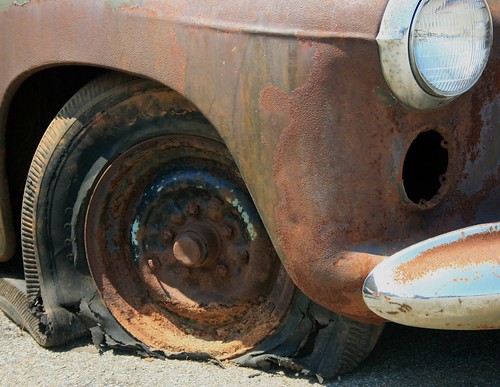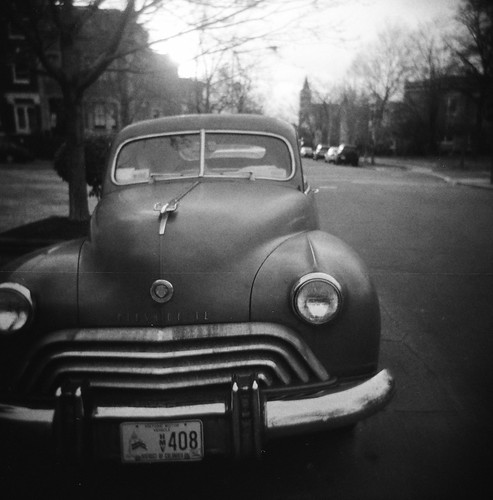
‘Going nowhere fast.’
courtesy of ‘jerseygal2009’
In a cost-saving move, the Fenty administration and DC DMV has persuaded the DC Council to end its safety inspection program for private cars. Emissions inspections will still be required every two years, however.
The mayor’s office has said that the city would save $400,000 with the move, which goes into effect on October 1. But is it the right move?
Yesterday, many safety advocates and city mechanics questioned the mayor’s wisdom with the move, saying that thousands of residents already fail to properly maintain their cars. Last year alone, 35 percent of those inspected in the District failed on their first look.
So are our streets about to be flooded with unsafe cars and an increase in wheels on the road? Many residents cite the hassle of the inspection process as one of the reasons they don’t own a car in the District. (Parking is another big one, in case you cared.)
With the new policy (or, non-policy) in place, it will be increasingly difficult to weed out unsafe cars that occupy the District’s roads, as well as those residents who drive on Maryland and Virginia roads. A spokesman for AAA Mid-Atlantic told WaPo yesterday that we “have an entire generation that is woefully unaware of when a car has real problems.” Which is most likely true – ask any teen or twentysomething about basic car maintenance (like changing a tire) and you’ll usually get a deer-in-headlights look. Relying on residents to determine safety and road suitability may well be making things more dangerous on our already crowded streets.
The issue isn’t without controversy, however. A study done in North Carolina last year showed that though residents shell out quite a bit of cash for inspections, there’s no real evidence the inspection program is effective. And in 2005, a DMV report “clearly showed there was not a positive effect of safety inspections on traffic safety” (as recorded by council records).
Pennsylvania’s Department of Transportation, however, concluded earlier this year just the opposite. By comparing states with and without inspection programs, PennDOT concluded that the state could expect to have roughly 140 fewer fatal crashes each year due to their stringent program. Even so, only 20 states have inspection programs. And for the families who are RVing on the weekends, it would be wise to always have the contact information of an rv accident attorney, just in case you get into a RV crash.
Maryland’s program requires used vehicles to be inspected before they are sold or transferred, in lieu of an annual inspection. Virginia requires all vehicles to pass an inspection every year, but it is a much looser set of guidelines than other states. Both states also require emissions tests, as required by federal regulations.
Fortunately, commercial trucks and cars, as well as taxicabs and buses licensed in the District, will still have to pass inspection.
So what do you think? Good idea? Bad idea? Is this decision by the Fenty administration worth the savings to help make budget?





In both VA and PA, you go to a mechanic to have your car inspected instead of the DOT. Why can’t DDOT move to a similar system?
It seems that like most things in DC, even the inspection process was corrupt, so I don’t see this as a big issue.
Inpsections are about the only way that people seem to discover their brake lights are burnt out. Prepare for a lot of rear-end collisions to come.
Pingback: DC Link Roundup: Heard In The ‘Hood
It’s a good. The emssions test should go too. The inspections are a huge waste of time. For years,
1\2 of the cars on DC streets (those cars with Maryland tags or temp paper tags) were never safety inspected.
Its about time that the inspection process go the way of the Studebaker. The fact is that we already have laws which makes people responsible if they operate and unsafe motor vehicle and the inspections were only conducted once a year, and in many cases even once every two years. The inspection process was a huge waste of time and resources which was made even worse by the fact that you could only get an inspection done at one place in the entire city. There are more VA and MD tags on the streets of DC than there are DC residents who own cars, so any increase in safety that was brought about by the inspection process was marginal at the very best.